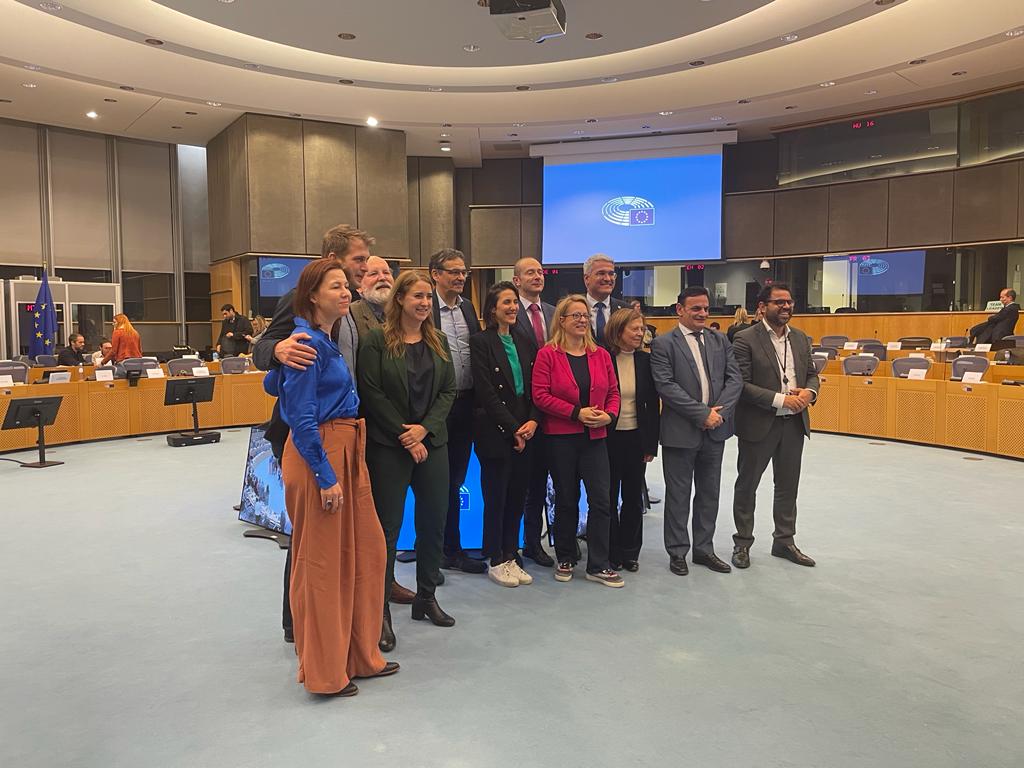A huge contribution to the climate at the lowest costs / Breathing space for citizens and industry in difficult times / Clear signal to industry: who decarbonises will benefit and be supported also in Europe / More support for vulnerable households and much more clarity and visibility on how the funds are spent
The European Parliament, the Council of Ministers represented by the Czech presidency and the European Commission agreed on a compromise for the biggest climate law ever. “The ETS will reduce emissions in the European Union by 1500 Mt CO2 until 2030. This means the contribution to the 2030 target of the European Union is 25 times higher than the disputed legislation on CO2 emission standards for cars and vans. We will get a lot for the climate at minimal prices. We will give breathing space for all citizens and industry in difficult times and we will give a clear signal to European industry that it pays off to invest in green technologies in Europe,” said Peter Liese, main rapporteur of the European Parliament and environmental spokesman of the biggest political group in the European Parliament (EPP, Christian Democrats). The negotiations lasted 29 hours and the final agreement was only made on Sunday morning at 02 a.m. “It was really tough but it was worth it,” said Peter Liese.
“For the EPP group, it was very important to get breathing space for citizens and companies in the difficult times of high energy prices. The ETS is the minor part of the electricity price, but a moderation of the price in the short-term is a contribution that is welcome for those who suffer. That’s why I‘m very happy that together with the package on REPowerEU, that we have agreed on early Wednesday morning, we will be sure that the efforts in the years from now to 2026 will be less than in the original Commission proposal, but after 2026 the ambition will be higher. This is possible because we anyhow need to invest more in energy efficiency and renewables due to the energy crisis and the necessity to get rid of Russian fossil energy. The mechanism that we used is first of all a limited intervention in the MSR due to REPowerEU, a frontloading of the Innovation Fund which will also mitigate the price in short term, a frontloading of national revenues in connection to REPowerEU and a split of the one-off reduction of allowances (rebasing). Instead of 117 allowances in 2024 as suggested by the Commission, it will only be 90 million allowances in 2024 and the rest will only be reduced in 2026. All this means, we have breathing space and time for investments until 2026. But from 2027 on its crunch time. Everybody needs to reduce emissions by then or will have to pay a lot. I hope this will boost the markets for renewables and energy efficiency strongly.”
In detail, the institutions agreed on the following:
• The target to reduce emissions will be increased from 40% in the current legislation to 62%. This is one percent more than the Commission proposal.
• Waste will be included in the ETS if an impact assessment of the European Commission comes to the conclusion that this is possible. The institutions aim at an inclusion in 2028.
• It has already been agreed that the Carbon Border Adjustment Mechanism is introduced for steel, aluminium, fertilizers, cement, electricity and hydrogen. The negotiators agreed on the timetable and the respective reduction of the allowances (2026: 2,5% - 2027: 5% - 2028: 10% - 2029: 22,5% - 2030: 48,5% - 2031: 61% - 2032: 73,5% - 2033: 86% - 2034 - 100%, corrigendum to earlier version).
• The Innovation Fund will be increased from its current level of 450 million allowances to 575 million. The Council even wanted to reduce the level to 412.5 million.
A new ETS for road transport and heating will be introduced from 2027. The Council significantly moved from its original mandate, accepting first an inclusion of the manufacturing sector that is not covered by ETS I. This will create a level playing field in Europe and make available about 6 billion EUR more for the Social Climate Fund. This fund, that has been 59 billion in the Council proposal is now increased to 86,7 billion EUR (25% co-financing) also due to strong co-financing that has not been in the Council’s mandate. Very important is a price cap mechanism. Based on a market mechanism we will assure that the price will not go higher than 45 euros (with a review in 2029). On top of that, we agreed on an emergency break, meaning if prices are high as they are this year, ETS II will not start. In reverse, the Parliament accepted to advance the inclusion of private households in the scheme from their original mandate to 2027, if the emergency break is activated to 2028. “Especially the deal on ETS II is very important and I whole-heartedly defend it. We need to use market-based measures also in the area of heating and road transport and it was very important to broaden the scope. The Council’s position would have meant that a poor family or an old lady, living in a badly insulated house or flat has to pay a CO2 price but manufacturers and industry, if they are below 20 MW, would have been completely excluded, even with the heating of their offices. This was unacceptable. With the broadening of the scope, we get more fairness and also more money to help those in need. Also, we get a level playing field, because in some Member States, all companies were already covered by a CO2 price. It is also very important that we got the price cap. In ETS I, the price is already close to 100 euros. We cannot accept this for ETS II. Everybody knows that the price will be less than half of this,” explained Liese.


